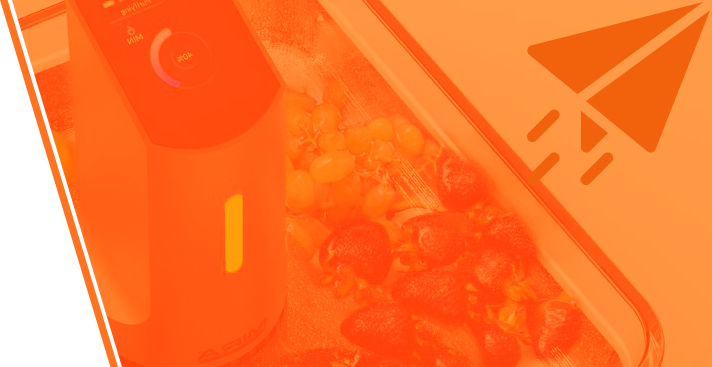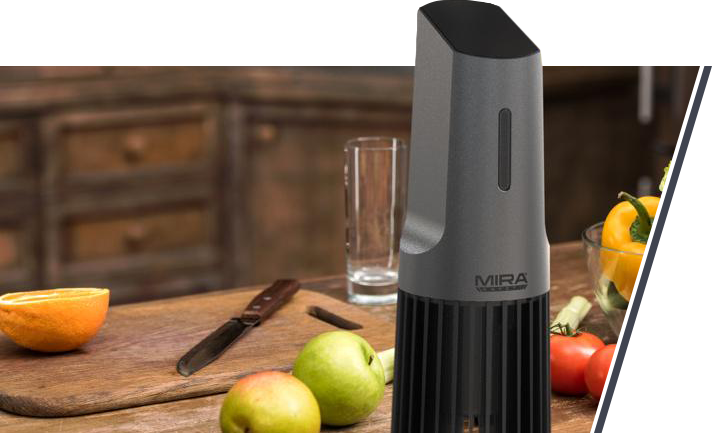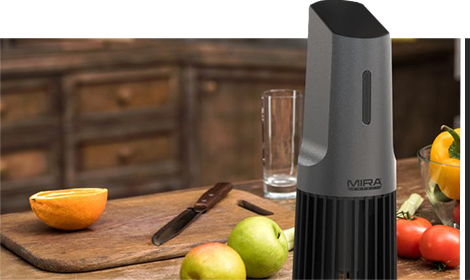
Though we share this earth with a myriad of creatures and microorganisms that we cannot see with the naked eye, that doesn't mean we can't feel their effects. A Cyclospora infection is an excellent example of this.
The word "parasite" conjures up this idea of something living deep within your guts and wriggling in there up to no good! And for a good reason. A Cyclospora infection may not result in a tapeworm crawling out of your nose, but these nasty little parasites can still cause you some incredibly severe gastrointestinal distress.
There are ways to protect your family against parasites, however. We can do more than simply have a reactive relationship with parasites and run to the doctors for some antibiotics should we suspect our bodies have been invaded.
So what does Cyclospora do? What are the basic facts about this little parasite? How can we prevent becoming sick with it, and what are the treatments should all preventative measures fail?
Let's dive right in.
Table of Contents
-
01
What is Cyclospora?
-
02
How do Parasite Infections Occur
-
03
How does a Cyclosporiasis Infection Happen
-
04
What are the Symptoms of Cyclosporiasis
-
05
How is the Parasite Infection Diagnosed
-
06
Treatment and Prevention of Cyclospora Infection
-
07
Use the MIRA Safety DTX-1 to Kill Parasites
-
08
Conclusion
-
09
Frequently Asked Questions
What is Cyclospora cayatanensis?
Cyclospora is a parasite that can cause intestinal infection in humans. It is a single-celled protozoan that belongs to the genus Cyclospora cayetanensis. The parasite is responsible for a condition called cyclosporiasis, and this is the type of infection we are looking to avoid.

Four Cyclospora cysts were found in a patient's stool sample, likely suffering from diarrhea.
Cyclospora is most commonly found in tropical and subtropical regions, where it can contaminate food and water supplies. The parasite is transmitted when an individual ingests food or water contaminated with infected fecal matter. This can occur when crops are irrigated with contaminated water or when food is washed or prepared with contaminated water. Poor personal hygiene can also play a role in the spread of the Cyclospora parasite.
It is a waterborne parasite similar to cryptosporidium that can also be found in contaminated water and will cause similar symptoms.
While cyclosporiasis is generally not life-threatening, it can be severe for people with weakened immune systems. The symptoms may persist or even last months to years. This chronic illness can take its toll on your body, leaving you dehydrated and malnourished.
How Do Parasite Infections Occur?
Parasite infections occur in humans when a parasite enters the body and begins to multiply by turning you into its new host. Parasites can enter the human body through many routes.
Up to the 1950s, people in the south were dealing with an epidemic of hookworms that lived in the ground beneath their feet. Walking barefoot was all the access these blood-sucking parasites needed to get inside the body.

Hookworm is a common parasite that finds its way into the body when people walk barefoot over infected soil.
Living on this planet means you are going to deal with parasites.
One of the most common ways parasites enters the human body is by consuming contaminated food or water. Parasites like Cyclospora, Giardia, and Cryptosporidium can contaminate food and water, particularly in regions with poor sanitation or inadequate hygiene practices. These parasites enter the body through the digestive system, so the symptoms are most commonly related to vomiting and diarrhea.
Other parasites can enter the body through the skin or mucous membranes. For example, the parasite that causes schistosomiasis, a disease that affects millions of people in developing countries, enters the body when a person comes into contact with water contaminated with the parasite's larvae. The larvae can penetrate the skin, travel to the bloodstream, and eventually establish themselves in the liver, causing symptoms like fever, abdominal pain, and diarrhea.

(Image courtesy of National Library of Medicine - History of Medicine at Wikimedia Commons)
Parasites can also be transmitted through contact with contaminated surfaces or objects. For example, the parasite that causes toxoplasmosis can be found in cat feces and transmitted to humans through contact with contaminated litter boxes or soil. The parasite can also be transmitted by eating uncooked meat from infected animals.
Once a parasite enters the human body, it can cause symptoms ranging from mild to severe. Symptoms include diarrhea, abdominal pain, fever, fatigue, and malnutrition. Some parasites, like malaria, can cause life-threatening complications if left untreated.
Preventing parasite infections in humans requires a multi-faceted approach that includes improvements in sanitation and hygiene practices and the use of medications and vaccines to prevent and treat diseases. Good hygiene practices, like washing hands regularly and washing meat and cooking it thoroughly, can help reduce the risk of parasite infections.
Vaccines, like those that protect against malaria, can also help prevent infections in high-risk populations or when traveling to areas where malaria is present.
How Does Cyclosporiasis Happen?
If you are going to understand how an infection like this can happen, there are some funny words you must learn. These words are common in the world of parasites but might not be as common in your life.
Oocysts: Coccidian parasites like Cyclospora go through a stage in their life cycle when they are tiny thick-walled microorganisms. These oocysts are shed through fees, which is how the parasite spreads.
Sporulated Oocysts: The next phase in the life cycle is to move from a noninfective oocyst to a sporulated, or infective, oocyst. This part of the process does not require a host. It only requires favorable conditions. The parasite can mature outside the body and become infectious.
When you come in contact with these infectious sporulated oocysts, they can make it into your body through your mouth, which is the most common pathway of infection in Cyclopsora.

(Image courtesy of The life cycle and transmission pattern of Cyclospora.)
What Are the Symptoms of Cyclosporiasis?
The most common symptom of cyclosporiasis is watery diarrhea. This symptom can come on quickly and unexpectedly, which is no fun. Diarrhea may be accompanied by cramping, abdominal pain, and bloating. Some people may also experience nausea, vomiting, fatigue, and weight loss. These symptoms can last for several days to a few weeks. The symptoms may also come and go as your body fights off the parasite infection.
In some cases, cyclosporiasis can cause more severe symptoms. These may include fever, severe dehydration, and malnutrition. If you have a compromised immune system, your parasite infection symptoms could last months while your body is trying to fight off the infection.
Those who are not immunocompromised are likely looking at severe diarrhea anywhere between 10-24 days.
Another common symptom of cyclosporiasis is frequent bowel movements. You might think this is the same as diarrhea, but it is different. Some people may have up to 20 bowel movements daily, which may contain mucus, blood, or pus. Cyclosporiasis can lead to complications such as dehydration, electrolyte imbalances, and intestinal obstruction if left untreated.

(Image courtesy of Dehydration treatments)
It's important to note that not everyone infected with Cyclospora cayetanensis will develop symptoms. Some people may have the parasite in their intestines but not experience any ill effects. However, they can still spread the parasite to others through their feces.
People from tropical and subtropical climates have adapted to dealing with this parasite and do not suffer extreme symptoms. Many do not experience symptoms at all.
If you experience any cyclosporiasis symptoms, seeking medical attention is essential. Getting the proper medications and giving your body rest will be the quickest path out of any parasitic infection.
Should you feel that going to the doctor is necessary, make sure that you tell your physician if you have recently returned from any vacations or if you have eaten foods that you suspect were imported from overseas.
CDC - Cyclosporiasis - Disease
Are There Complications Associated with Cyclospora infections?
Rarely.
However, one thing about the world of healthcare is that if you can imagine something terrible happening (e.g., a bar shooting through somebody's head and causing permanent personality changes), it's probably happened to somebody.
Gut infections are commonly associated with the development of Guillean Barre syndrome and Reiter's syndrome, and Cyclosporiasis is no different. If somebody is diagnosed with one of these two conditions, there is a chance that it is a result of Cyclospora if they also recently had a bout of prolonged diarrhea.
How is the Parasite Infection Diagnosed?
The diagnosis of a Cyclospora infection is typically made through laboratory testing. This is not the kind of infection that you will be able to diagnose on your own. You will likely chalk it up to "food poisoning," which covers so many types of viruses, bacterial infections, and parasites that it is impossible to know what is happening.

Cyclospora in the US in 2013. (Image courtesy of CIDRAP at Wikimedia Commons.)
There are three main methods used to diagnose Cyclospora infection.
-

Stool sample analysis: A stool sample is examined under a microscope to detect the presence of Cyclospora oocysts (the parasite's eggs).
-

Polymerase chain reaction (PCR) testing: This test amplifies the genetic material of the parasite, making it easier to detect and identify.
-

Serologic testing: This blood test detects the presence of antibodies to the parasite in the blood, indicating that the person has been exposed to the parasite.
Please pay close attention to your symptoms and communicate them to your doctor. You might even have to recommend testing like this.
A NOTE OF INTEREST
Contaminated cilantro shipped in from Mexico was the cause of a number of Cyclospora outbreaks in both the United States and Canada between 2013-2015.
What is the Treatment for a Cyclospora Infection?
The primary treatment for cyclosporiasis is a course of antibiotics. The most commonly used antibiotic for this condition is trimethoprim-sulfamethoxazole (TMP-SMX). This medication is typically taken for 7 to 10 days and can effectively kill the parasite. Alternatively, antibiotics such as ciprofloxacin or nitazoxanide may be prescribed.

Cotrimoxazole, the common name for trimethoprim-sulfamethoxazole. (Image courtesy of Kristoferb at Wikimedia Commons.)
In addition to antibiotics, it is essential to maintain good hydration during the course of the illness. Lots of fluids, like water, can help prevent dehydration and reduce symptoms such as diarrhea.
I recommend adding electrolytes to your water, as these can be lost. If your body reaches dangerously low levels, other problems can occur beyond just the symptoms of the Cyclospora infection.
In severe cases of cyclosporiasis, you may need to visit a hospital. This is particularly true if you or someone you love has a compromised immune system. Others who could require hospitalization are those who have underlying health conditions.
Get treatment early if you are dealing with someone like this. It can be critical.
Prevention of Cyclosporiasis
Preventing cyclosporiasis involves reducing the risk of exposure to the parasite. This is not a threat we can vaccinate for the long term; it is not a parasite that will go away. That said, our modern world has done a great job of controlling this threat.
Here are some tips for preventing cyclosporiasis:
Practice good personal hygiene: Washing your hands regularly with soap and water is one of the best ways to prevent the spread of cyclosporiasis. Not to mention it stops the spread of most significant illnesses. Be sure to wash your hands before preparing or eating food, using the restroom, and handling potentially contaminated materials.
Cook food thoroughly: Cooking food to the appropriate temperature can kill the parasite and reduce the risk of infection. Be sure to cook meat, poultry, and seafood to their recommended temperatures, and avoid eating raw or undercooked foods.

Wash produce: Washing fresh fruits and vegetables thoroughly can help remove any parasites that may be present on the surface. Use a vegetable brush to scrub the produce and rinse it with clean water.
That said, there are some limitations to how clean you can get certain foods with water. Things like sprouts and herbs can be hard to clean thoroughly.
Avoid contaminated water: Drinking contaminated water is a common way of contracting cyclosporiasis. Avoid drinking untreated water from lakes, streams, or wells, and bring water or buy water if you are traveling to areas where the water could be contaminated.
Be cautious when traveling: Traveling to areas with poor sanitation or hygiene practices can increase the risk of cyclosporiasis. Be sure to wash your hands regularly, avoid drinking untreated water, and stick to foods that have been thoroughly cooked and prepared in a sanitary manner. Americans tend to vacation in areas where this parasite lives. Remember, it likes subtropic and tropical climates.

Practice safe food handling: Proper food handling and storage can help prevent the spread of cyclosporiasis. Store food at the appropriate temperature, avoid cross-contamination between raw and cooked foods and discard any food that appears spoiled or contaminated.
These steps can reduce your risk of contracting cyclosporiasis and protect your overall health and well-being. Next, we will introduce you to a new piece of technology that can become your in-home solution for eradicating Cyclospora along with other parasites, bacteria, viruses, and pesticides.
Use the MIRA Safety DTX-1 to Kill Parasites

The MIRA SAFETY DTX 1 Detoxifier is a cutting-edge technology that can help prevent parasites and cyclospora infection. This device is designed to clean vegetables, meats, fruits, and even personal items using the cleansing power of oxidation.
This device generates ultrasonic waves and tiny oxygen bubbles that cleanse whatever you have set in the water. The DTX-1 Detoxifier has a variety of settings that will allow you to clean all sorts of things with 100% assurance that pathogens and contaminants have been removed.
It is truly the next step in household cleanliness. This revolutionary technology not only cleans your produce of contaminants but can also take contaminated water that might contain pathogens like Cyclospora.

Approximately 40–50% of all harmful substances enter our body through food and 20–40% through the water.
The DTX-1 features durable, low-profile construction with a top-mounted touchscreen. Once you immerse the unit's fins in a container of water, you activate it by selecting options on the touchscreen.
Then, the detoxifier takes care of the rest—pulsing the container with ultrasonic waves and rapidly releasing active oxygen molecules to cleanse your produce from the inside out. The DTX-1 features multiple modes targeting threats, from antiparasitic to thermal treatments.
The antiparasitic setting is designed to run a process that will kill the Cyclospora in all its forms. This will rid you of all your concerns regarding ingesting parasites that could be in your water or your food.

The detoxification process is all-natural and completely self-contained, with no soap or cleaning solution required. The only other thing you'll need is electricity from a 120V AC wall outlet. Beyond the cost of electricity, the DTX-1 has zero operating and maintenance costs.
Overall, the MIRA SAFETY DTX-1 Detoxifier is a highly effective device that can help prevent parasites and Cyclospora infection.
Conclusion
The idea of some parasitic creature writhing around inside you is undoubtedly nauseating. However, parasites are much more common than you think. The good news is both our bodies and modern medicine are well-equipped to take care of most of them.

Good personal hygiene practices and knowing the quality of the food and water you are ingesting go a long way in prevention. Understanding that this particular parasite lives in tropical and subtropical regions can also help you better understand where to be careful.
We grow some very popular foods that are eaten all through the country in tropical and subtropical environments. Sometimes rinsing produce is just not enough to make your food safe. If you want a natural solution for parasites, pathogens, and other contaminants, then you need the MIRA Safety DTX-1 Detoxifier. That's the only 100% assurance you can have.
Gastrointestinal distress is never a good time, and chances are you will not hammer down the source to one particular bacteria or parasite. So, why not eradicate them all with this detoxifier's ultrasonic waves and powerful oxidation.





